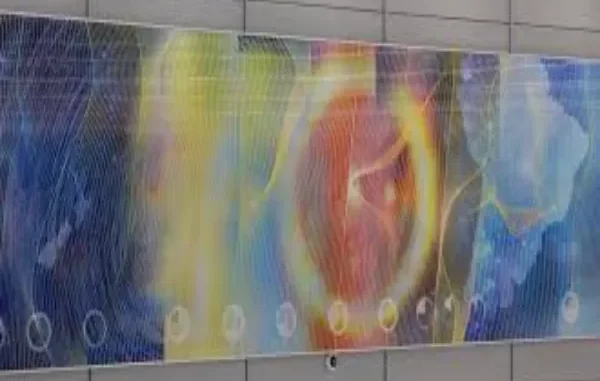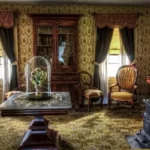

When you look at a normal picture, it doesn’t move. It doesn’t alter and simply sits there. But when you look at a custom-printed lenticular, it’s different. The picture can flip, move, zoom, or even look three-dimensional. It appears to be alive.
Keep in mind that this printing process has no comparison. It pairs specialty lenses with layered photographs to create effects that have your full attention in an instant. People gawk. They edge closer. They remember it long after they depart.
Lenticular is powerful for businesses and events, and even as a keepsake. It does not just show a message. It makes the message an experience.
This article explores how this printing style creates such stunning visual effects step by step.

What Lenticular Printing Really Is?
At its core, lenticular printing is a technique for animating two-dimensional images. The lens is the key. A lenticular sheet has microscopic ridges that guide light. They are like hundreds of tiny magnifying glasses laid side by side.
Therefore, underneath that sheet is not one image. There are several images, sliced into extremely thin strips and set in a specific order. Each strip is so delicate that your eyes can’t separate them. Instead, the lens directs your vision. When you move the print, you see alternate strips, and the image moves.
If there are two images, it flips back and forth. If there is a sequence of frames, the motion is smooth. If the picture is created in layers, the picture seems to have depth and is three-dimensional.
And the impact is surprising because it appears so natural. You don’t need glasses or a screen. The image and the lens do the job. You move or tilt, and the image responds.
When it’s done as a custom printed lenticular, the effect is even stronger. The artwork is designed with the lens in mind, so the illusion is flawless. This is why lenticular prints are so eye-catching. They take an ordinary two-dimensional design and make it interactive, alive in your hands.

Different Types of Lenticular Effects
Not all lenticular prints are the same. In fact, most designers use three basic effects. Each one creates its own magic, and each one speaks to people in a unique way.
First, there is the flip effect. This is the simplest and most common one. It uses two, sometimes three, images which change as the print is rotated. One instant, one picture appears. A slight rotation, and voila. Another picture leaps into existence. It is an impression of revelation, almost a before-and-after.
Next comes the motion effect. It is more than alternating between two images. Instead, it uses a set of frames that create movement. The result can show sliding, zooming, morphing, or transformation images.
Finally, there is the 3D effect. This is where lenticular printing shines. By layering artwork in depth, the lens creates a sense of space. What was once on a flat plane now has fore and background distance. Things appear as if they’re floating or projecting forward.

Process That Brings the Effect to Life
There is a lot of care that goes into every lenticular print. It begins with the image. Designers select which effect they want: flip, motion, or 3D. Based on that, they arrange the pictures.
To achieve a flip, they choose two intense images with opposing contents. To achieve motion, they arrange a series of frames illustrating smooth movement. And to achieve 3D, they build the work in layers such that it appears as though the background and foreground are distinct.
Once the images are ready, they are cut into narrow strips with specialized software. This is also called interlacing. The strips are then placed in a repeating pattern that matches up with the ridges of the lenticular lens. The objective is to make sure that each ridge shows the proper piece of the proper image when held at the proper angle.
When it is all done right, the outcome is seamless. You’re holding the print, angling it, and seeing it happen. The movement appears smooth. The depth is real. The flip is crisp and clean.
Why These Effects Capture and Hold Attention?
Signs, posters, and screens surround the world. Yet most of them fade into the background and go unnoticed. The reason is rooted in the way human eyes and brains are designed to respond.
When an image appears to reverse when tilted, the motion amazes and calls for a second look. When an image appears to move, the eyes involuntarily follow the action. When depth is seen from a flat surface, the mind leans forward to experience what is happening. Every time, lenticular transforms a simple print into something that people are curious about and are unable to avoid looking at.

How Lenticular Printing Creates Lasting Impact?
The most lovely aspect of lenticular printing is not what falls under the eye at first sight. It is what happens afterwards. People hold onto it. People remember it. They talk about it.
A flip-effect postcard is not tossed away as quickly as a regular card. It usually ends up on a fridge or on top of a desk, where it stays visible. A lenticular-motion business card is not casually stuffed into a wallet and lost. It is shown around among peers as something cool. A 3D-depth poster is a keepsake piece of art.
This lasting value is the surprise and the pleasure that lenticular creates. People enjoy interacting with it. They tip it back and forth, they watch the images change, and they keep on doing it. That continuous interactivity gives rise to memory.
Final Thought
Lenticular printing is not paper and ink. It uses special lenses and creative design to create depth effects, flipping images, and moving pictures. That is how it achieves such memorable visual effects that people cannot help but pay attention.
It works because the human eye is drawn to change. It turns mundane products into experiences. It brings fanciful ideas to life. Most importantly, it leaves a lasting impression.






Leave a Reply